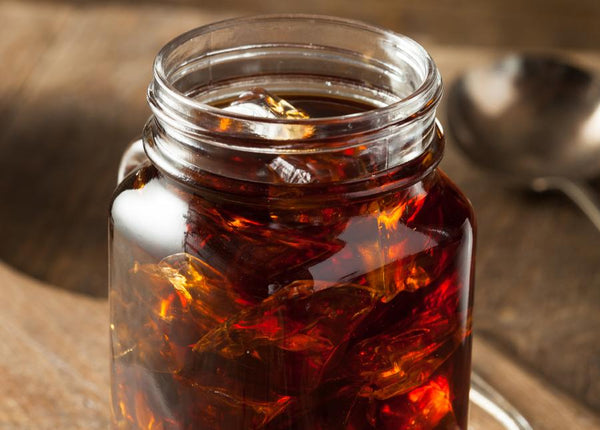
Cold Brew vs Iced Coffee – What’s The Difference?
For ages, iced coffee has reigned supreme as THE morning beverage of choice for hot summer days. But a few years ago, a new player came into the game. This smooth new player didn’t have the flat, diluted flavour of the traditional iced coffee.
Who is this newcomer? Cold brew, of course.
And now, as hot weather has slowly graced us with her presence, there is one thing on the mind of all the coffee-loving people…COLD COFFEE!
Why Is Cold Brew So Popular?
To be fair, all cold coffees changed the game and the menu boards at coffee shops, but the allure and appeal around the culture of the cold brew is pronounced.
In the era of social media, trends and hipsters, marketing can take products to a whole new level. Brands appear to compete for the cutest and coolest cold brew cans and cold brew taps. Aesthetically appealing product that provides a unique, vibrant taste like cold brew is hard to resist for many consumers.
Make Cold Brew At Home
Luckily for you, wading through all the different brands of cold brew out there is a whole situation you can avoid. You can make your own homemade cold brew that is just as, if not more, delicious than one you will find downtown in the newest, funkiest coffee shop. It comes down to the flavour, which you can create in the comfort of your own home.
Making a delicious cold brew at home, like other aspects of coffee culture, comes with a price tag. It can be more expensive than making iced coffee, but for a good reason! Cold brew uses more coffee grounds to make than iced coffee.
Cost aside, let’s be real: most of us are more than willing to pay a pretty penny for a cold coffee on a hot summer’s day!
In Short: Differences Between Cold Brew and Iced Coffee
As cold brew continues to gain popularity and iced coffee is getting bumped down on the menu list, here’s a quick summary of the difference between the two:
Cold Brew:
- Brewed cold, never heated up
- A concentrate twice as caffeinated as regular coffee
- Tastes less bitter, smoother, and more chocolatey than traditional coffee
Iced Coffee:
- Brewed as normal, which is then cooled down
- Regular coffee simply poured over ice
- Tastes like cooled down coffee, thinner due to melting ice, but with a full body
There is a lot to love about iced and cold brew coffee…but that does not mean you will like both!
Cold Brew: Simply Better Coffee?
When making iced coffee in the past, brewed coffee was just hot coffee poured over ice. Some people would chill it first and then add ice. Others would brew it hot at double strength, then pour it over ice where it could dilate to the appropriate level.
But true cold brew, on the other hand, does not involve the traditional method of high heat and instant brewing. Instead, coffee grounds are steeped in a mason jar full of room temperature (or cold) water for anywhere between 12 and 24 hours. Cold brew is generally made at a much higher coffee to water ratio compared to drip coffee. This is because it needs to compensate for the lower temperature, as it brews slower but has a higher brew strength. The end result is a softer, richer flavour that is significantly less bitter!
The Cold Brew Lowdown
Homemade cold brew is produced using a long soaking period process, which creates a concentrate stronger than drip coffee. Although not as strong as iced espresso, cold brew concentrate packs quite a punch, with about twice the caffeine per ounce as a regular cup. Because of its strength, we suggest you dilute your cold brew concentrate with milk, water or ice in a 1:1 ratio, unless you are a brave soul and drink it straight!
The Iced Coffee Lowdown
Since iced coffee is brewed as regular coffee, the product is exactly the same, only iced coffee must go through a cooling process. It tends to be watered down as it typically gets served over ice. The flavour of regular iced coffees often has a poor taste due to what happens to the chemical structure of it when the temperature moves from hot to cold. The process of oxidation occurs after roasting, and the oxygen brings out unpleasant flavours, causing the coffee to go stale. The heat involved with traditional brewing expedites the oxidation process.
So, Which One Is For You?
Before you make any decisions, here are a few questions to ask yourself:
- Do you want to reduce your sugar and calorie intake?
- Do you want a better flavoured coffee to start your mornings?
- Are you willing to spend the money on quality beans?
- Do you want to try something new?
- Are you tired of diluted coffee flavours from melting ice in your drink?
If you answered YES to any of the questions…. then cold brew is for you. Definitely give cold brew a chance if you have not already.
The 4 Key Steps To Better Cold Brew At Home
- You must use good beans. Always, always start using freshly roasted, high-quality coffee beans. No exceptions!
- Get the grind correct. Cold brew requires a specific grind. Grind the beans to a large coarse grind (similar to the coarseness of raw sugar) to keep the brew from getting bitter while it brews.
- Use a higher ratio of coffee to water. Most recipes use a ratio of 8 ounces of ground coffee to 8 cups of water.
- Strain slowly. Rely on gravity to gently remove the cold brew from the grounds with a strainer. Do not squeeze or press down the coffee grounds while straining, as that extracts bitter flavours.
Choose Brewing America To Start Brewing!
You will love the ability to have cold brew coffee waiting in the fridge for you, especially this summer.
We offer the highest quality of products and are proud that most of our products are manufactured right here in the USA. With free shipping within the USA, you can get started on home brewing without additional costs.
Take a look at the products we offer to get started on your homemade cold brew coffee making.
